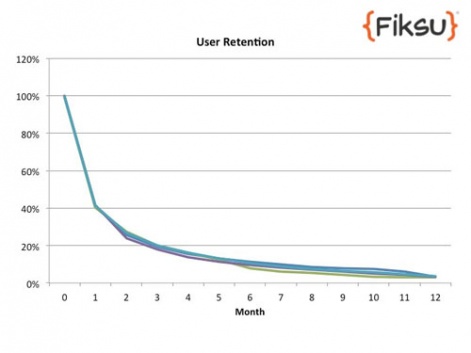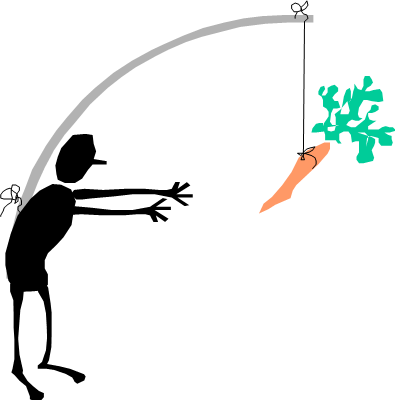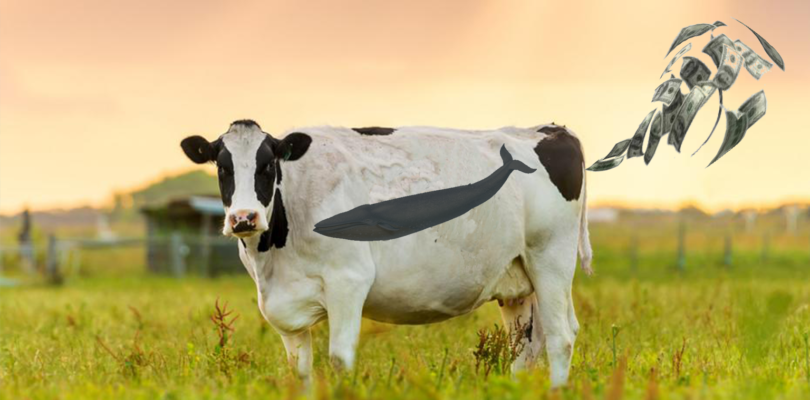Here’s a number of reasons you could be here, the chances are you’ve asked yourself one of the following questions;
- “What is a Cash Cow Game?”
- “How do I identify a cash cow game”
- “How do I break free from my microtransactions addiction”
The first two questions I can answer pretty thoroughly. But the third question I can only address how I personally broke the vicious cycle of online spending, and give you tips as to what you could attempt to do in order to curb your spending online. I am in no way a financial expert/advisor so if you are suffering from any debts due to a microtransactions addiction then I am unable to help. To receive debt advice you would need to speak to a trained professional from various helplines available within your country.

Contents
What is a cash cow game?
Definition: a business, investment, or product that provides a steady income or profit.
The direct definition sounds fair no? they supply the service and enjoyment to the consumer and the consumer provides money to support the company. Why’s that different from any other business? What’s the problem? I’ll go more in depth about how the problem lies in the “Steady income” part of that definition within cash cow games.
During this article I’m going to be frequently referring back to a game that first roped me into my personal struggle with microtransactions, Star Wars: Galaxy of Heroes. Which I will abbreviate as GoH. A mobile game I still play casually to this day.
Game developers usually keep their data and statistics very close to their chest. So I’m going to be using a chart developed by fiksu and posted to Pocketgamer.biz that used a number of games’ data to establish an average life cycle of a mobile game . To be used as a rule of thumb. Then compare that to data collected by sensortower.com in regards to the games profits.


The first phase of a games release is the initial hype phase, this is where all the people that heavily anticipated its release get the game. Then through word of mouth the popularity grows as many people jump on the bandwagon, resulting in the player count ascending sharply, soon hitting its peak. At this moment the target audience is the new players that are willing to pay for the convenience of not having to grind as hard for characters or gear.
Upon hitting its peak amount of retained players, games usually begin their inevitable descent. This is caused due to players getting bored and venturing onto new games. but after a while the steep slope levels out and what you are left with is the new target customer. The “Whale”(The player who pays to get a competitive advantage and be at the top of the game. Pay-to-Win players, as it were.)
Before hitting this peak the game is generally pretty unrestricted, there isn’t so much of a Meta and the game is very simplistic in order to lure the new players in, but upon the decline of numbers, they turn their focus onto micromanagement, creating and changing a dominating competitive ‘Meta’ and the “milking of the cow” essentially begins here.
It is at this declining period that the cash cow game adopts a carrot on a stick method to ensure the stability in their profits, and constantly puts a new meta behind a paywall, as well as rendering the old Meta outdated. This is because as the player base steadies out and the decline becomes more gradual. The players that are generally remaining are the more dedicated players that are less likely to leave. Included among these are the developers new target audience, the Whale. At this point new players are so far behind the flow of the game that it’s very rare that they stick around.
As the new target has transitioned from being the level 1 newbie. To now being solely reliant on the purchases from the player who prides himself on staying ahead of the curve. The game ensures it receives a stable income by instead of asking for £50 from the player and getting the same profits through player count. They instead push the paywall so that in order for the player to keep up to date with the meta the player now has to spend in excess of 200 pounds so that he stands a chance at remaining ahead of the curve. If you notice on the chart, despite the fact that the user count plummets, the profits stay relatively steady throughout. This is because they demand more and more from the players willing to pay in order to maintain a steady flow.
So how do they milk the cash cow?

Again going back to the carrot on a stick analogy, This is essentially what happens. The paying player is at this point so accustomed to paying, say… £100 a month in order to remain up to date being a competitive top tier player. They then begin bringing out more content, whether it’s a new character or new items that otherwise become unreachable without parting ways with more money. This is usually followed by a meta change. The new character becomes the meta, and the old meta gets “Balanced”. a few months down the line and the carrot gets further and further away, in order to unlock a new character, you need to own 3 other characters, who also originate from behind their own individual paywall. You need to build them up to a level that again is unreachable without further investing more and more money. Resulting in the player instead of being exploited for £100 a month, he now has to lose in excess of £400 a month to make sure that he remains at the top. This is because they are attempting to make the paying player make up for the money they aren’t earning from leaving players. They want to maintain that steady flow, but with an ever decreasing player base.
How do players fall for it?
the general idea that people share, is that when the company starts asking for more money. Why do people not just stop paying, leave or play without being top tier. this happens because if over the space of 2 years, a player has spent £2000 on a game to remain at the top. they would then feel the need to remain at the top, in order to justify the amount spent.
The addiction is usually encouraged by the games initially offering “Starter packs” and “special deals” where the user gets far more than what the game feels the products are worth. This is kind of like a gateway drug, gives you a taste of the benefits you receive by paying. This frequently leads to people transitioning from a consumer paying for the convenience of it into a consumer paying out of a felt necessity. They physically feel they “need” to keep ahead of the competition.
How to identify a cash cow game?
In order to identify a cash cow game, you need to first establish what exactly you are getting for your money. Games like Fortnite, though technically are also cash cow games. With their in-game purchases being nothing more than changes to the aesthetics. they target a different, more honest market.
However, if the game you are interested in allows you to pay to speed up a buildings construction, gear a character up or unlock a new hero altogether. Or if your game has “loot boxes” or “packs” that give anything other than skins and emotes.(FIFA I’m looking at you) then yes, it most definitely is a cash cow game.
A lot of cash cow games don’t start out with the intention of being such, but at the same time I believe they always have a plan of what they will do when the user count begins to dwindle. So don’t just judge a game on what it’s like at the present. But look at things that could potentially be tweaked to only accommodate Whales.
How do I break out of this vicious cycle?
If you are here because you feel you yourself are trapped inside this cycle of spending. Then you need protecting from yourself and your vulnerability to spending money. The first step I did to protect myself from this was removing all payment methods from my phone. I’m aware that I could of just re-entered them all but this was more of a deterrent to the impulse buying. Which I will speak about later in this section.
The next thing I did was accepting that what I was doing given my own circumstances wasn’t sustainable. I did this by looking at things that prior to this I was investing in blindly. but now I was forcing myself into doing the math first. I’ll give you a scenario;
There is a character pack advertised on the store, and it advertises that there is a chance that you can earn a set number of shards for the character in question, who shall be named character “X”. You can earn either 5-10-20-50-100-330 shards for this character. and you need to get to 330 shards in order to get the character to where they need to be. The probability to get 5 shards is around 90%. whereas to get 330 shards is less than 1%. So the majority of the time you will only get 5 shards upon opening a character pack.
So to elaborate. Originally what I’d do to obtain “X” is I would invest £80, then I’d inevitably fall short, so I’d invest another £80. and I’d blindly repeat this until I had the character at where I wanted it to be. whereas before I was gambling on the fact I may get lucky and get the 330 shards in one. I was now putting a price tag on the character, and to do this I was coming up with a “worst case scenario”. I assumed that every single purchase I was only going to get 5 shards for the character. So I done “350 divided by 5. which came to 66 packs I would have to open to guarantee this character. so instead of going in with a gambling attitude of, ‘it may only cost £100’. Then sinking more and more into it like throwing petrol onto a fire. I went into it knowing that I was likely to spend a whopping £395.34 for one character on a mobile game.
Once I’d put a price tag on what I was about to do, suddenly the spend became less enticing. I was sure that seeing that sum had put me off for life. But sometimes when you are addicted to something, Logic and rationality can evade you. So my last plan to stop myself paying for a micro transaction was… letting myself do it.
“Wait, what?” I hear you say. I know it sounds crazy, but sometimes the resisting of an addiction is harder than the addiction itself. The temptation is always there. from the start I said to myself that if I wanted to truly follow through with it after all these steps. Then I will just allow myself to do it. BUT, under one condition. I decided that I would need to stick to the “worst case scenario” formula. go down to a cash machine/ATM and physically withdraw the money I wanted to spend. I would then have to go into the shop and buy the required balance in the form of PLAY store gift cards. Though it never came to me marching down to the shop to withdraw money. Just knowing it wasn’t like kicking an addiction made it a whole lot easier to overcome. When you are at home on your phone or computer, spending £400 on a game is as easy as a few clicks of a button. There’s no immediate consequences to your actions. It’s nothing more than a number on a screen.
But being aware that in order to get that character, you will need to go down to the shop and physically withdraw £400 worth of bank notes to spend, suddenly this mentally does become your money that you’re spending. That’s a months rent, two months worth of shopping. If in order to stay above everyone else on a game that ultimately means nothing results in you living until the next payday living on the breadline. Is it worth it?
I’m heavily in debt due to microtransactions, what do I do?
As stated at the beginning of this article, I am not an expert on finances and debt management. My article is entirely based around my own experience in dealing with addiction to online spending.
If you are in financial trouble then depending on what country you are from, there will be a number of different helplines available for you to talk it through with a qualified trained expert.

Pingback: Top 10 Richest Video Game Companies - AIR Entertainment
Pingback: What is the Konami Code? Everything You Need to Know!
Pingback: Madden NFL 21 Review (Xbox One + PS4) AIR Entertainment